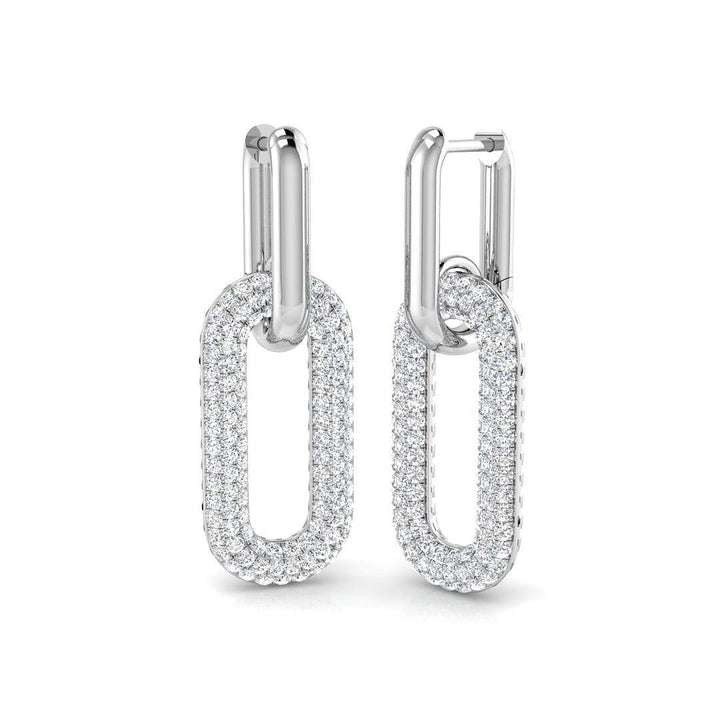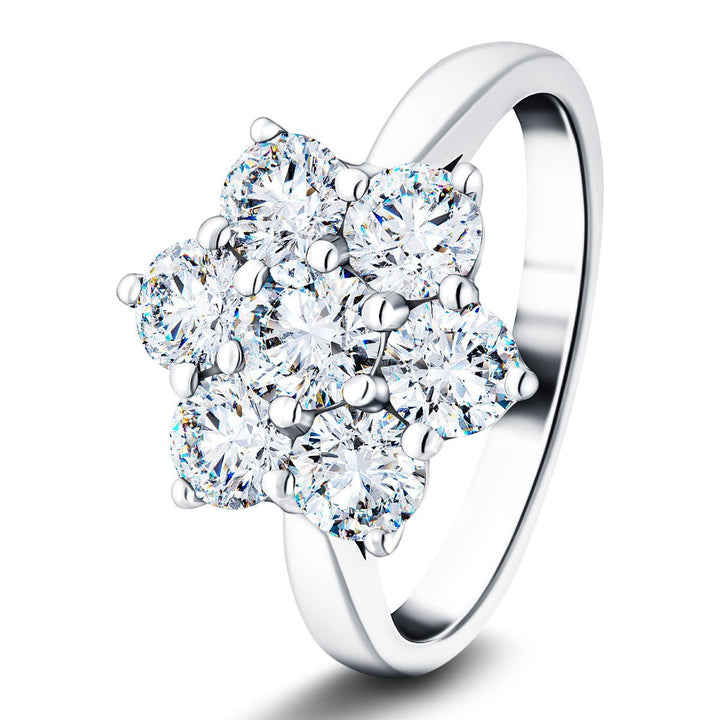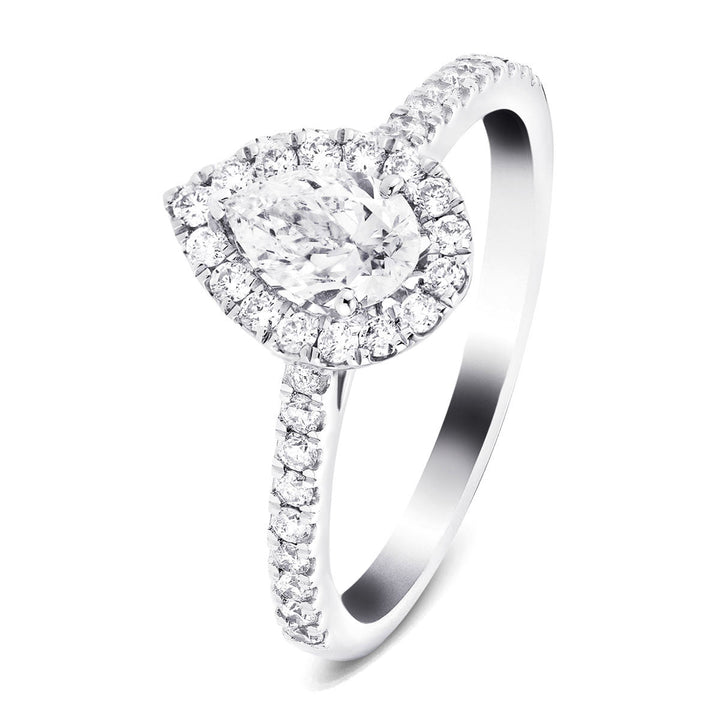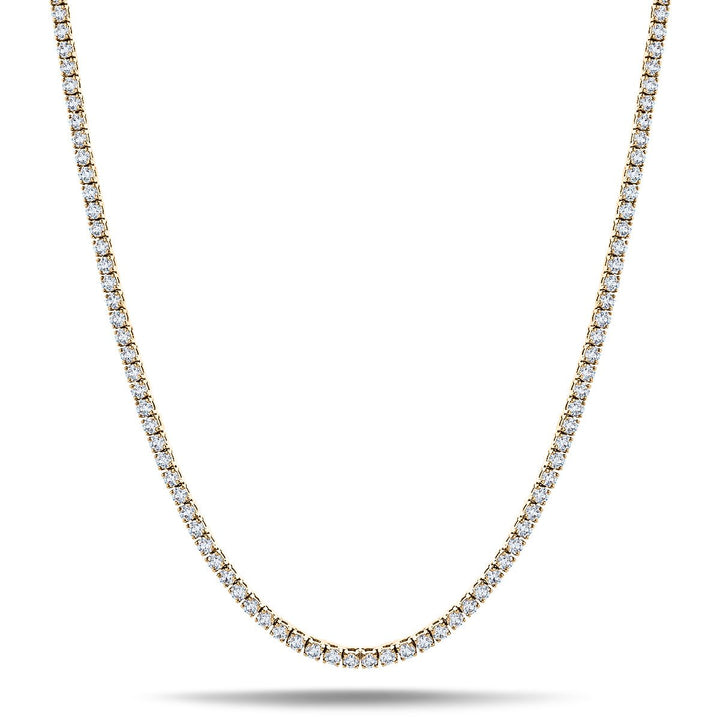Lab-grown diamonds, synthesized through high-pressure, high-temperature (HPHT) or chemical vapor deposition (CVD) processes, represent a paradigm shift in both the gemstone market and technical applications. Beyond their allure in jewellery, lab-grown diamonds in industry offer unparalleled properties such as extreme hardness, thermal conductivity, and electronic characteristics, making them indispensable across various industries.
From enhancing the efficiency of cutting tools to playing a pivotal role in high-pressure research apparatus, and even in the burgeoning field of electronics as heat sinks and semiconductors, lab-grown diamonds demonstrate a flexibility that belies their crystalline structure. As we explore the expanding horizons of their applications, one can't help but ponder the transformative impact they may hold for future technological advancements and scientific breakthroughs. As production costs continue to fall, the range of their practical application will grow as new uses are discovered for lab-diamonds.
Key Takeaways About Lab-Grown Diamonds in Industry
- Lab-grown diamonds offer sustainable and ethical alternatives for jewellery and industrial applications.
- They enable scientific breakthroughs with their use in high-pressure experiments and advanced material research.
- Their properties enhance electronics, lasers, and thermal management in various industries.
- Lab-grown diamonds are pivotal in developing new technologies in quantum computing, sensing, and biomedical imaging.
£1,615.00
These Lab Diamond Fancy Drop Earrings present a captivating combination of modern elegance and timeless allure. Featuring a total of 3ct D/VVS quality lab-grown diamonds, these earrings showcase a diamond-studded cross gracefully suspended from a diamond-encrusted hoop. Each earring measures… read moreLab Diamond Fancy Drop Earrings 3ct D/VVS in 9k Yellow Gold

£3,595.00
Jewellery and Ornaments
In the domain of jewellery and ornaments, lab-grown diamonds have emerged as a cornerstone, offering both sustainability and ethical alternatives to traditional natural diamonds, revolutionizing the industry with their impeccable quality and versatility in design. The integration of lab-grown diamonds within the jewellery industry underscores a commitment to not only meeting but exceeding the standards of luxury and beauty traditionally reserved for mined diamonds. The demand from consumers for products that are not only of exceptional quality but also ethically sourced and environmentally sustainable is what is driving this shift.
The synthesis of lab-grown diamonds facilitates a new era of customisation in jewellery manufacturing, allowing designers to craft unique pieces that cater to individual preferences, without the constraints of natural diamond availability. This level of customization underscores a significant shift towards consumer-centric approaches in jewellery design, where value is placed not only on the aesthetic and physical properties of the diamonds but also on the ethical and sustainable practices involved in their creation.
The adoption of lab-grown diamonds is a confirmation of the jewellery industry's evolving ethos, prioritizing transparency, sustainability, and ethical considerations, which are increasingly becoming determinant factors in consumer purchasing decisions.
Pave Set Lab Diamond Paperclip Earrings 1.50ct D/VVS in 925 Silver

£830.00
£1,495.00
These exquisite Pave Set Lab Diamond Paperclip Earrings, boasting a total diamond weight of 1.50ct, epitomise modern elegance and craftsmanship. Each lab diamond, meticulously selected for its D/VVS quality, sparkles in a pave setting, enhancing the striking design. Crafted with… read more
Industrial Cutting Tools
Beyond their aesthetic allure in jewellery, lab-grown diamonds play a pivotal role in the domain of industrial cutting tools, where their unparalleled hardness and durability are of paramount importance. The synthesis of these diamonds guarantees a consistent quality that traditional mining cannot always guarantee, making them a reliable component in high-stakes manufacturing environments. Their exceptional hardness, coupled with the ability to be engineered for specific applications, makes lab-grown diamonds an indispensable asset in the fabrication of industrial cutting tools.
The integration of lab-grown diamonds into industrial cutting tools elevates the precision and efficiency of manufacturing processes. These diamonds facilitate high-precision cutting and grinding, critical in industries where material waste reduction and exacting standards are non-negotiable. The cost-effectiveness of lab-grown diamonds, compared to their natural counterparts, allows for the economical production of superior industrial tools.
| Property | Benefit to Industrial Tools | Impact on Industries |
| Hardness | Extended tool life | Reduced operational costs |
| Precision | High-precision cutting | Enhanced product quality |
| Durability | Resistance to wear and tear | Increased tool longevity |
| Cost-effectiveness | Lower manufacturing costs | More affordable tools |
| Consistency | Uniform tool performance | Predictable outcomes |
This table illustrates how the unique properties of lab-grown diamonds contribute to the development of advanced, high-performing industrial cutting tools, marking a significant step forward in manufacturing technology.
High-Pressure Experiments
Lab-grown diamonds, synthesized with precision, are pivotal in the fabrication of diamond anvils, which are instrumental in conducting high-pressure experiments critical to advancing scientific knowledge in various disciplines. These synthetic diamonds' unparalleled hardness and ability to withstand extreme pressure environments make them indispensable in creating environments where researchers can simulate conditions found deep within the Earth or in other celestial bodies. By applying precise pressure conditions through lab-grown diamond anvils, scientists gain insights into material behaviors under such extreme conditions, which is essential for disciplines ranging from geology to materials science.
Additionally, the use of lab-grown diamonds in high-pressure research equipment allows for a level of accuracy and control not feasible with other materials. This precision is essential in experiments aiming to understand the phase changes of materials, the formation of complex molecules under high pressure, and the synthesis of new materials that require specific pressure conditions for their creation. Consequently, lab-grown diamonds have become a cornerstone in scientific research, enabling breakthroughs in understanding the fundamental principles governing matter under extreme pressure environments. Their role underscores the symbiotic relationship between advanced materials and scientific progress, where each discovery propels the other forward.
Lab Diamond 1.00ct Cluster Ring D/VVS Quality in 18k White Gold

£715.00
£1,595.00
Unveil the epitome of elegance with the Lab Diamond 1.00ct Cluster Ring, a masterpiece that merges striking femininity with unparalleled craftsmanship. This exquisite ring features a cluster of real diamonds, totalling 1.00ct, each meticulously claw set to highlight their radiant… read more
Electronics and Heat Sinks
Expanding upon their role in high-pressure experiments, lab-grown diamonds also enhance the efficiency of electronic components through their superior thermal conductivity, serving as advanced heat sinks. In the domain of electronics, heat management is critical for maintaining the performance and longevity of devices. Lab-grown diamonds, with their exceptional thermal properties, stand out as an ideal material for dissipating heat, thereby ensuring that electronic systems operate within their best temperature ranges.
The importance of lab-grown diamonds in electronics and heat sinks can be underscored by the following points:
1. High Thermal Conductivity: Lab-grown diamonds exhibit thermal conductivity rates notably higher than traditional heat sink materials, facilitating rapid heat dissipation.
2. Reliability in Extreme Conditions: Their robust properties allow for consistent performance in high-temperature environments, making them suitable for a wide range of electronic applications.
3. Enhanced Device Longevity: By efficiently managing heat, lab-grown diamonds contribute to the prolonged operational life of electronic components.
4. Versatility in Applications: From consumer electronics to high-power laser systems, lab-grown diamonds provide a versatile solution for thermal management challenges.
Scientific Research Applications
In the domain of scientific research, lab-grown diamonds are increasingly recognised for their pivotal role in enabling groundbreaking experiments and technologies. Through the process of chemical vapour deposition, these synthetic diamonds are cultivated with precision, allowing scientists to exploit their unique properties for a wide range of applications. Their exceptional physical properties, such as hardness, thermal conductivity, and electron mobility, make them invaluable in pushing the boundaries of material science and engineering.
The Department of Energy, among other research institutions, has leveraged the capabilities of lab-grown diamonds to develop more efficient and durable materials for use in extreme environments. This includes high-pressure physics experiments where lab-grown diamonds are used to create environments similar to those found in the Earth's core. Additionally, their optical properties are harnessed in developing high-performance laser systems and in photonics for quantum computing applications.
The versatility and controlled quality of lab-grown diamonds facilitate the advancement of existing technologies and the exploration of novel scientific territories. Their broad applicability across scientific disciplines underscores the transformative potential of these synthetic gems in advancing human knowledge and technological innovation.
Energy Use in the Production of Lab-Grown Diamonds
The energy required for creating lab-grown diamonds depends on the specific method used. Let’s explore the two primary techniques:
High Pressure, High Temperature (HPHT):
In this process, carbon is subjected to extreme temperatures and pressures to replicate the conditions deep within the Earth where natural diamonds form.
A single-stone HPHT press consumes approximately 175–225 kilowatt hours (kWh) per rough carat, translating to around 650–1100 kWh per successfully polished carat.
Chemical Vapor Deposition (CVD):
CVD diamonds are grown using plasma, which combines high-energy electrons and ions (similar to lightning or the aurora borealis).
An electromagnetic field akin to that generated by a microwave oven is used to form plasma and facilitate diamond growth.
The energy consumption during CVD synthesis can exceed 200 kWh per carat.
Nancy Lab Diamond Halo Pear Engagement Ring 1.10ct G/VS in 18k White Gold

£1,230.00
£2,351.00
Experience the magic of love with the Nancy Lab Diamond Halo Pear Engagement Ring, designed to dazzle your senses. This ring boasts 1.10 carats of G/VS-graded diamonds, including a pear-cut diamond at the centre surrounded by a diamond halo. There… read more
Energy Used to Mine Natural Diamonds
The amount of energy required to mine diamonds varies tremendously depending on the location and mining techniques employed. Researchers from a group comprising HSE University, the Institute of Oil and Gas Problems of the Siberian Branch of the Russian Academy of Sciences and Skoltech analysed energy consumption data from Alrosa in Russia and De beers and found that in Eastern Siberia and South Africa, energy consumption per carat of rough diamonds fell in a range of 96-150 kWh per carat. This is less than what is typically found in lab diamond creation.
In summary, lab-grown diamonds require varying amounts of energy depending on the growth method. While CVD tends to be more energy-efficient than HPHT, both processes contribute to producing sustainable alternatives to mined diamonds. However, energy use, in general, is greater than necessary to mine natural diamonds. Both mining and the production of synthetic diamonds offer the potential to reduce energy consumption. What is unavoidable is the environmental degradation of mining, where, apart from careful management of the mining facility, the only solution is effective remediation after production has ceased.
Frequently Asked Questions About Lab-Grown Diamonds in Industry
What Are the Applications of Lab-Grown Diamonds?
Lab-grown diamonds, synthesised through advanced technological processes, serve multifaceted applications across various sectors. Their utilisation encompasses abrasive granules for cutting and polishing, enhancing efficiency in manufacturing industries.
Their deployment in creating diamond anvils facilitates pivotal high-pressure experiments essential for scientific research. Moreover, these diamonds play a pivotal role in developing heat sinks and wear-resistant coatings for advanced technological applications, demonstrating their indispensable value beyond mere aesthetic appeal in jewellery.
What Are the Industrial Uses of Lab-Grown Diamonds?
Lab-grown diamonds are pivotal in industrial sectors due to their unparalleled hardness and durability. These synthetic diamonds produce abrasive granules for cutting, grinding, and polishing tasks, enhancing efficiency and cost-effectiveness.
Their application extends to creating diamond anvils for high-pressure research and developing heat sinks and wear-resistant coatings in advanced technological solutions.
What Is the Environmental Impact of Lab-Grown Diamonds?
The environmental impact of lab-grown diamonds is reduced compared to their mined counterparts. Produced in controlled environments, these diamonds necessitate less land disruption and water usage, addressing concerns associated with traditional diamond mining.
The process is energy-efficient and can emit less carbon, contributing to a smaller environmental footprint. Lab-grown diamonds offer a sustainable and ethical alternative, aligning with increasing demands for responsible sourcing and environmental conservation in the gemstone industry. However, even with current energy efficiency, lab-diamond production can use more energy than producing mined diamonds.
What Are the Ethical Benefits of Lab-Grown Diamonds?
The ethical benefits of lab-grown diamonds are multifaceted, primarily highlighting their role in promoting sustainability and ethical labour practices.
Unlike their mined counterparts, these diamonds are produced in controlled environments, ensuring the absence of conflict and unethical labour conditions. Additionally, their production reduces environmental degradation, aligning with global efforts towards sustainability.
Lab-grown diamonds also offer traceable origins, providing consumers with conflict-free assurance and promoting a more ethical supply chain in the gemstone industry.
20ct Lab Diamond Tennis Necklace D/VVS Quality in 9k Yellow Gold

£7,085.00
£14,210.00
Radiate pure elegance with this tennis necklace featuring 20ct of lab-grown D/VVS quality diamonds set in 9k yellow gold. Every diamond is claw set to perfection in this UK handcrafted and hallmarked piece. With a length of 17", this necklace… read more
Our Conclusions About The Industrial Use of Lab-Grown Diamonds
To sum up, lab-grown diamonds represent a multifaceted technological advancement with a broad spectrum of applications that extend far beyond their ornamental value.
Their unparalleled hardness and thermal conductivity make them indispensable in industrial, scientific, and technological domains. These include cutting and polishing tools, facilitating groundbreaking high-pressure experiments, and enhancing electronics with superior heat sinks.
The adaptability and cost-effectiveness of lab-grown diamonds underscore their potential to drive innovation and efficiency across multiple industries and scientific fields, heralding a new era of material application and research.
Of course, here at After Diamonds, we are mainly interested in the beauty of diamonds and their use in fine jewellery. We hope that you have found this brief roundup on the use of lab-grown diamonds in industry interesting. We'd love for you to take a few moments to browse our collection of fine diamond jewellery all made using high-quality lab-created diamonds. We hope that the work of our British designers and artisans will inspire you to choose lab-grown diamonds as the centrepiece of your next jewellery purchase!
Further Reading About Lab-Grown Diamonds in Industry
1: The applications and advantages of lab-created diamonds
2: The many applications of lab-created diamonds
3: Lab-grown diamonds in micro and power electronics
4: Experts explain how diamonds are made in a laboratory
5: Laboratory diamonds in scientific research: new opportunities





